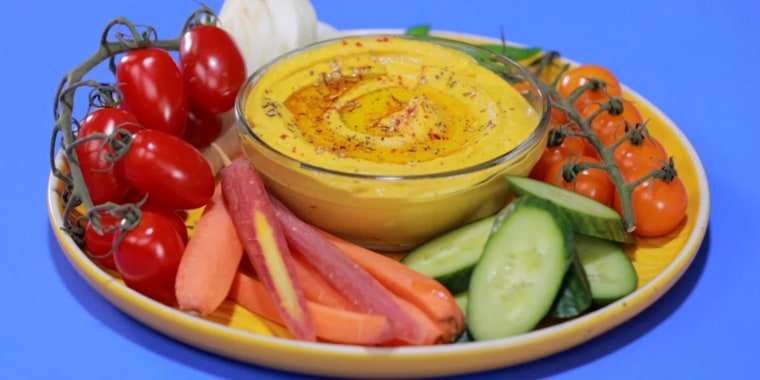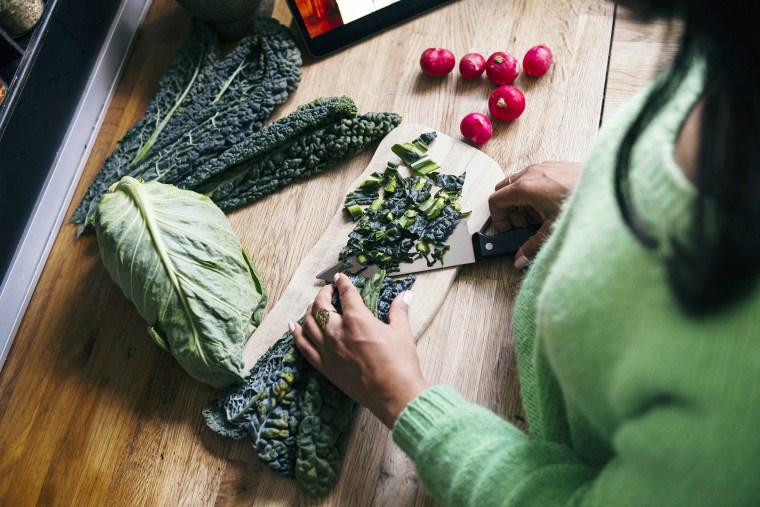In the past few years, oodles of celebrities have touted eating the anti-inflammatory diet. Everyone from NFL quarterback Tom Brady to actor Sophia Bush have come out as proponents. And high profile doctors — like dermatologist Nicholas Perricone and integrative medicine doctor Andrew Weil — have advocated for eating the anti-inflammatory diet for decades.
The interesting thing about this array of unofficial spokespeople is that they all seem to have different reasons for adhering to the anti-inflammatory diet. Sophia Bush has said that the diet helps with her asthma and Tom Brady's diet is designed to help him reach peak performance. With all these big names behind it, the anti-inflammatory diet seems appealing. But is the anti-inflammatory diet healthy or just hype?
Dietitians say the anti-inflammatory diet is frequently prescribed as a complementary medicine approach to help manage symptoms for people with various chronic illnesses, and that it's generally a healthy eating plan for anyone of any age. We talked to an epidemiologist and a dietitian to find out what, exactly, the anti-inflammatory diet is, who it's good for and how to follow it.
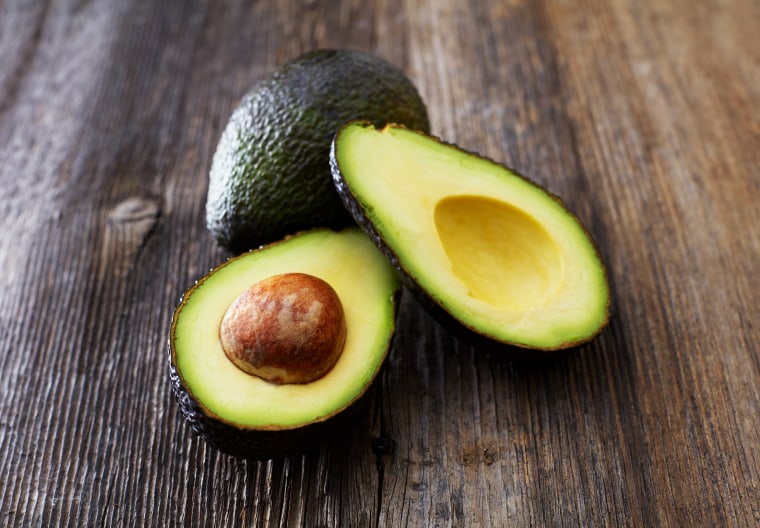
What is the anti-inflammatory diet?
As its name implies, an anti-inflammatory diet focuses on foods that help prevent and lower inflammation in the body. Basically, the anti-inflammatory diet boils down to eating more of the foods that lower inflammation in the body and reducing your consumption of foods that can exacerbate inflammation. Inflammation can lead to disease
Inflammation is the result of the body’s immune response kicking into gear to help your body heal and protect you from further injury — think swelling, pain, cough, fever. But if that immune response stays ramped up for too long or goes awry, it can cause a number of problems, like obesity, Type 2 diabetes, heart disease, rheumatoid arthritis, psoriasis, inflammatory bowel diseases — like Crohn’s disease and ulcerative colitis — and cancer.
How are nutrition and inflammation connected?
The theory behind the anti-inflammatory diet is that by avoiding certain inflammation-triggering foods — processed foods, high-sugar foods, fried foods, processed red meat and saturated fats — you lower the amount of chronic inflammation in the body and therefore lower your risk of developing those problems or exacerbating any you already have.
The foods you’re allowed to eat on the diet — fruits, vegetables, omega-3 fatty acids —particularly those found in fish, nuts and olive oil— are foods we see over and over again in nutrition research as being associated with fewer health problems and generally longer, healthier living, explained Deirdre K. Tobias, ScD, associate epidemiologist at Brigham and Women’s Hospital and assistant professor at Harvard Medical School and Harvard T.H. Chan School of Public Health.
Foods to eat on the anti-inflammatory diet
Fruits and vegetables are high in antioxidants and phytochemicals, both types of micronutrients that help reduce inflammation. Other anti-inflammatory nutrients include omega-3 fatty acids — specifically the EPA and DHA varieties found in salmon, sardines and tuna, mono-unsaturated fats — found in olive oil — and herbs and spices — like ginger, turmeric and green tea. Those not eating animal products should note that the omega-3s found in plants is ALA, which is not known to have the same anti-inflammatory effects as the omega-3s found in fish.
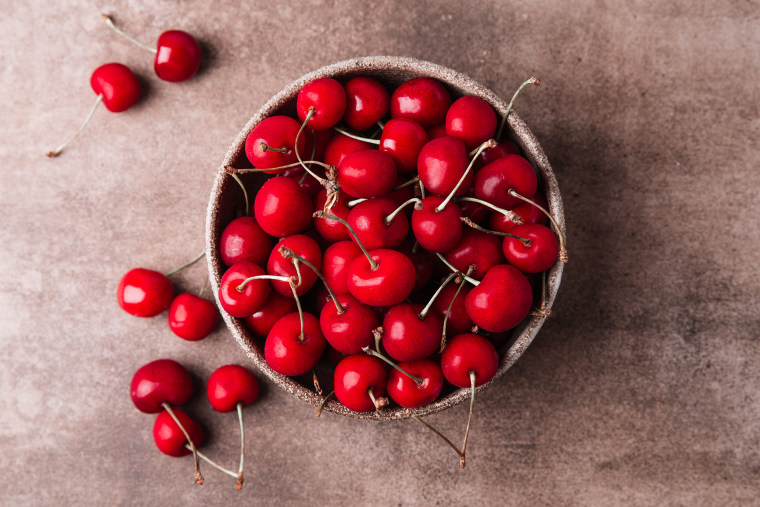
On this diet, your plate will consist of:
- Apples
- Artichokes
- Avocados
- Beans
- Berries
- Cherries
- Cruciferous vegetables — like cauliflower, broccoli, cabbage
- Dark chocolate — at least 70% cacao
- Dark green leafy vegetables — like kale and collard greens
- Fish — especially oily fish like salmon, herring, mackerel, sardines and anchovies
- Flaxseeds
- Fruits
- Nuts — like walnuts, almonds, pecans and hazelnuts
- Olive oil
- Omega-3-fortified foods — including eggs and milk
- Sweet potatoes
- Whole grains
Foods to avoid on the anti-inflammatory diet
Foods known to increase inflammation that you’ll avoid — or limit — on an anti-inflammatory diet include:
- overly processed foods
- refined carbohydrates and sugar
- red and processed meats — like salami, hot dogs, ham, and sausages
- trans fat
- refined seed oils — like soybean, corn, sunflower, and others
- dairy — some is OK, but don’t overdo it; fermented dairy like yogurt and kefir is better
Avoiding refined carbohydrates — like white bread, white rice, white flour and sugar — and instead choosing complex carbohydrates —like whole grains, potatoes and fruits — helps keep blood-sugar levels more stable, which also reduces inflammation. Foods high in fiber — like whole grains, legumes and non-starchy vegetables — have the same effect.
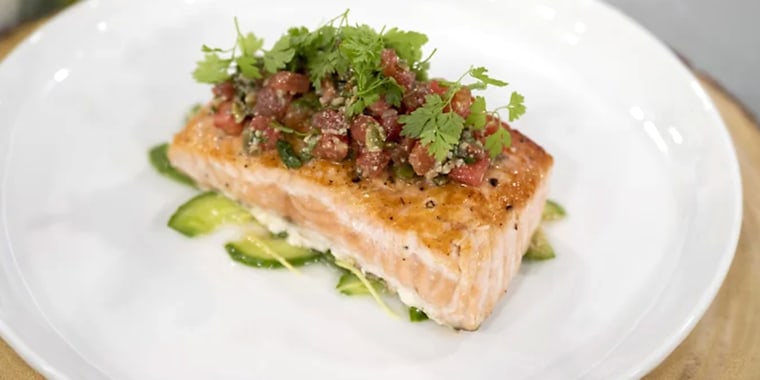
What does research say about the anti-inflammatory diet?
Studies suggest certain foods can have anti-inflammatory effects in the body.
Research suggests stabilizing insulin levels — avoiding blood sugar spikes and crashes by limiting sugars and refined carbs — and consuming more omega-3 fatty acids — found in salmon and tuna — than omega-6 fatty acids — like those found in vegetable oils — helps lower chronic inflammation. Polyphenols, which are found in non-starchy vegetables, also help tamp down the inflammatory response. Antioxidants found in fresh herbs, spices and some teas have also been found to reduce inflammation.
Increasingly, studies suggest that people who follow anti-inflammatory diets tend to do better over time when it comes to avoiding or managing chronic illnesses. Research suggests eating anti-inflammatory foods may help lower heart disease risk, better manage the symptoms of rheumatoid arthritis, and overall reduce early death.
While the data clearly shows there are health benefits associated with regularly choosing these foods, what’s less clear is to what degree these specific foods alone are what’s keeping chronic inflammation lower and therefore keeping these health risks at bay, Tobias said. “Whether it’s one specific food or nutrient or really just eating healthfully overall that might lead to some beneficial effect in your weight, blood pressure and inflammation, is still unknown.”
But regardless of why it works, the diet is still a balanced and healthy one, she adds.
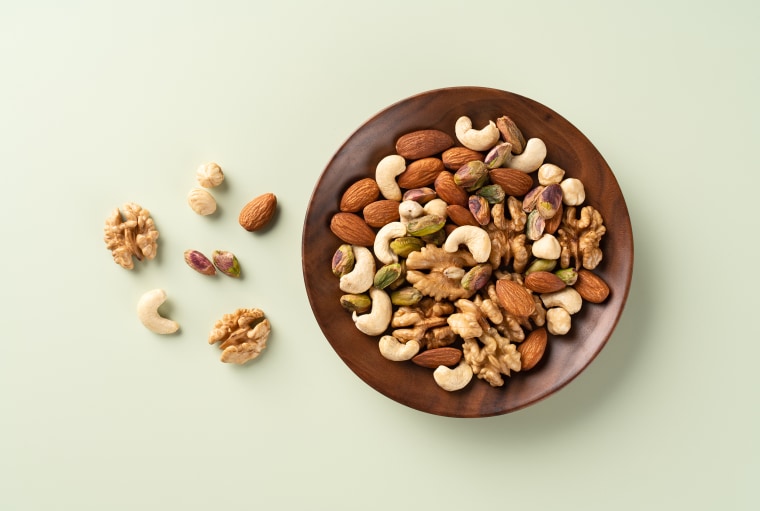
Who is the anti-inflammatory diet good for?
Everyone can benefit from eating the foods thought to be anti-inflammatory, said Shapiro. But for people with certain autoimmune disorders where chronic inflammation can trigger flares or make symptoms worse — like in Crohn’s disease, rheumatoid arthritis, psoriasis and lupus, a lot of people find that adjusting their diet to include anti-inflammatory foods can help, she adds.
Other conditions eating this type of diet might lower risk of or help manage, include:
- Alzheimer’s disease
- Asthma
- Cancer
- Heart disease
- Chronic pain
- Type 2 diabetes
- Stroke
- Other inflammatory bowel diseases — like ulcerative colitis
Your dietitian may recommend doing an elimination diet to get a more personalized prescription for the type of anti-inflammatory diet that works best for you, Shapiro said. Under the direction of a dietitian, you’ll eliminate lots of foods that might be triggering inflammation. Then gradually, one at a time, you’ll add foods back into your diet and observe whether specific ones trigger the symptoms you’re trying to avoid, Shapiro explained.
Remember: If you want to try a dietary intervention to help with symptoms, it’s best to do it under the direction of a dietitian and other clinician — like your doctor. And such an approach should only be used alongside — not in place of — your regular treatment and care.
What is the deal with nightshades? Should I stop eating tomatoes and eggplant?
You may have read headlines about specific high-profile athletes and others who avoid nightshade vegetables — tomatoes, white potatoes, eggplant, bell peppers and spices that come from peppers, like cayenne and paprika — because they claim they trigger inflammation, too.
Here’s where the evidence is pretty thin. There’s not yet research to show that those vegetables trigger inflammation or increase risk of long-term health problems, Shapiro said. They do contain chemical compounds called alkaloids, which in high amounts can cause problems. But you’re simply not getting enough from those vegetables you might be eating to be concerned, she added. On the other hand, those vegetables are known to contain essential nutrients like vitamin C and lycopene that you do need.
Anecdotally, some people say they feel better when they cut those vegetables out. But Tobias recommended consulting with a dietitian if you’re planning on doing so. “When you start eliminating whole groups of food, there can be micronutrient deficiencies that you’re not really making up elsewhere,” she said.
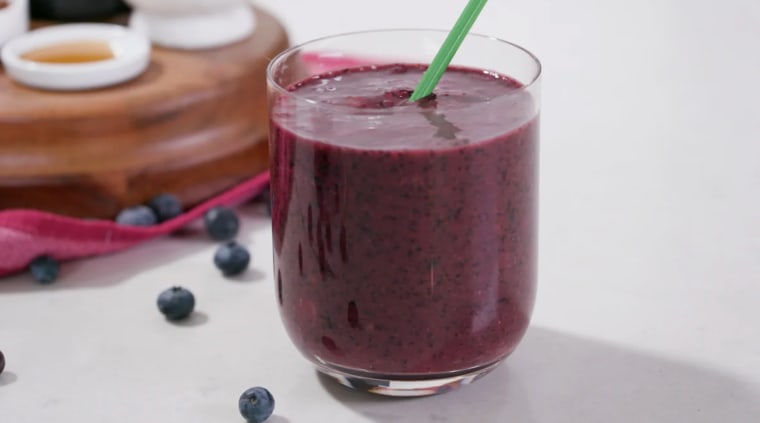
A sample meal plan for the anti-inflammatory diet
Here’s a sample menu of what a day of eating might look like, according to Amy Shapiro, RD, founder and director of Real Nutrition in New York City:
Breakfast: Two eggs any style served over spinach sprinkled with sea salt and pepper
Lunch: Grain bowl (1/2 quinoa topped with roasted salmon, sliced avocado, purple cabbage and ginger dressing made from fresh ginger, carrots, avocado oil, tamari and garlic)
Snack: 1/4 cup sprouted almonds with 2 tablespoons sulfur-free raisins
Dinner: Tacos with grass-fed beef, black beans, brown rice, sliced avocado, fresh salsa in almond flour tortillas or taco shells
The anti-inflammatory diet is similar to:
Mediterranean diet, which focuses on whole foods and minimizes processed foods
The DASH diet, developed to help lower blood pressure
Vegan diet, which focuses on whole plant-based foods, but excludes animal products
The MIND diet, which also limits sugary foods and red meat
Low-FODMAP diet, which also utilizes an elimination method to pinpoint problem foods
The bottom line on the anti-inflammatory diet
The anti-inflammatory diet is overall a healthy and flexible approach to eating for most people. And there’s some — though not 100% — overlap with components of a lot of other very healthy diets, like the Mediterranean diet, the DASH diet and vegan diets. The science illustrating the mechanism behind why these specific foods and nutrients are linked to better long-term health, however, has a way to go. But regardless of why it works, the eating philosophy is a solid one for most people to adopt.
